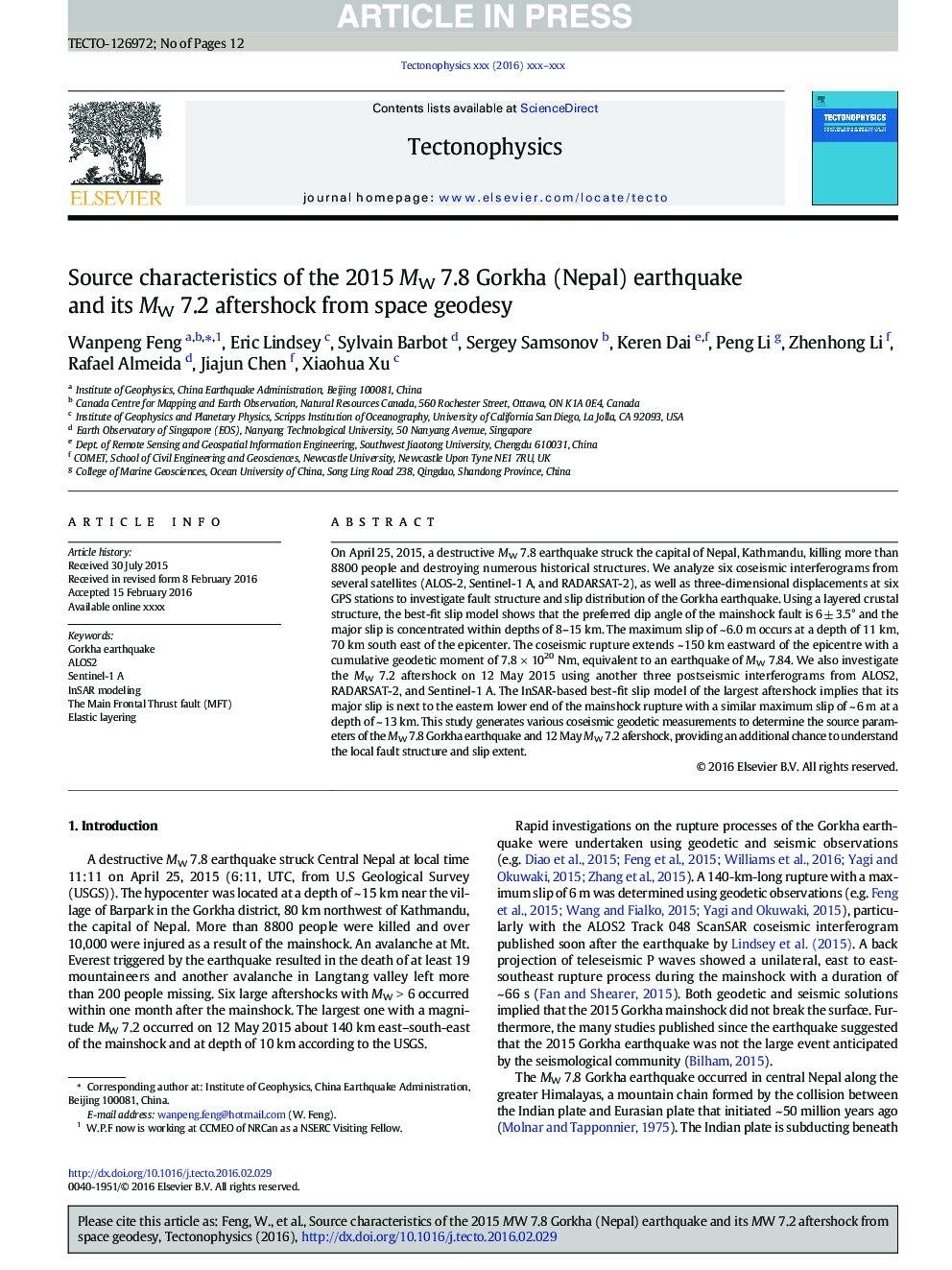| Article ID | Journal | Published Year | Pages | File Type |
|---|---|---|---|---|
| 5781574 | Tectonophysics | 2017 | 12 Pages |
Abstract
On April 25, 2015, a destructive MW 7.8 earthquake struck the capital of Nepal, Kathmandu, killing more than 8800 people and destroying numerous historical structures. We analyze six coseismic interferograms from several satellites (ALOS-2, Sentinel-1 A, and RADARSAT-2), as well as three-dimensional displacements at six GPS stations to investigate fault structure and slip distribution of the Gorkha earthquake. Using a layered crustal structure, the best-fit slip model shows that the preferred dip angle of the mainshock fault is 6 ± 3.5° and the major slip is concentrated within depths of 8-15 km. The maximum slip of ~ 6.0 m occurs at a depth of 11 km, 70 km south east of the epicenter. The coseismic rupture extends ~ 150 km eastward of the epicentre with a cumulative geodetic moment of 7.8 Ã 1020 Nm, equivalent to an earthquake of MW 7.84. We also investigate the MW 7.2 aftershock on 12 May 2015 using another three postseismic interferograms from ALOS2, RADARSAT-2, and Sentinel-1 A. The InSAR-based best-fit slip model of the largest aftershock implies that its major slip is next to the eastern lower end of the mainshock rupture with a similar maximum slip of ~ 6 m at a depth of ~ 13 km. This study generates various coseismic geodetic measurements to determine the source parameters of the MW 7.8 Gorkha earthquake and 12 May MW 7.2 afershock, providing an additional chance to understand the local fault structure and slip extent.
Keywords
Related Topics
Physical Sciences and Engineering
Earth and Planetary Sciences
Earth-Surface Processes
Authors
Wanpeng Feng, Eric Lindsey, Sylvain Barbot, Sergey Samsonov, Keren Dai, Peng Li, Zhenhong Li, Rafael Almeida, Jiajun Chen, Xiaohua Xu,
